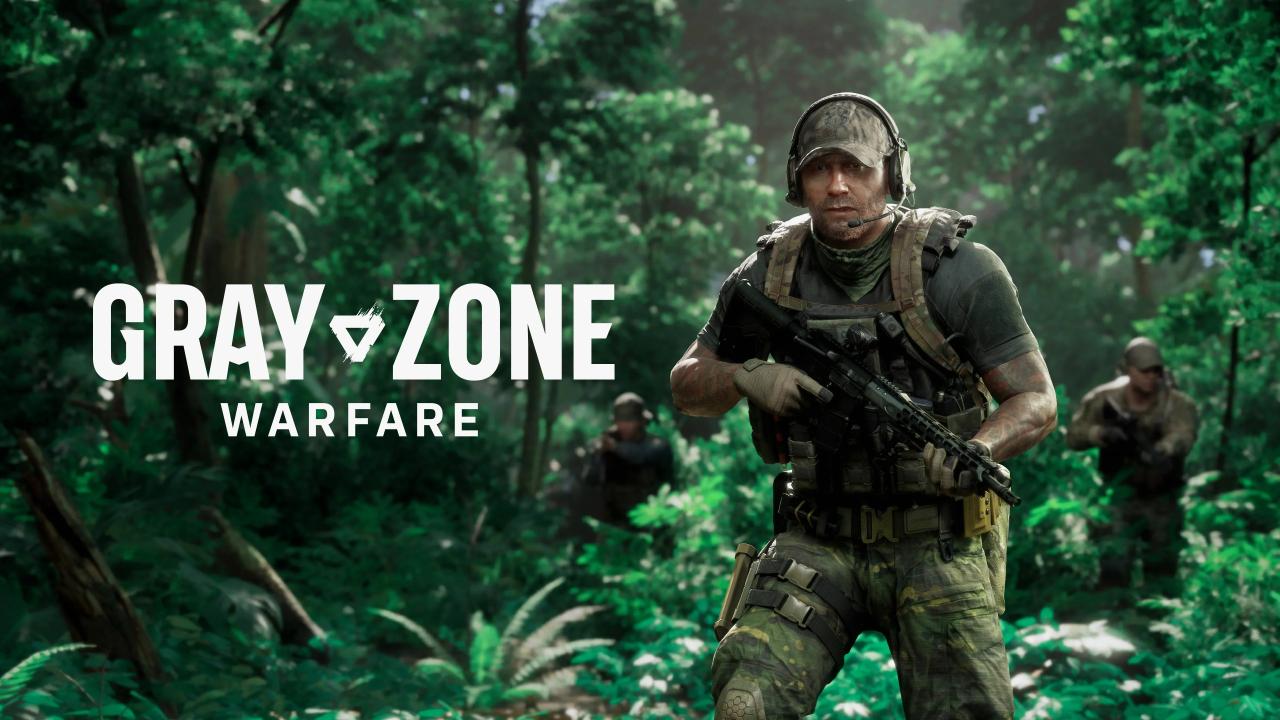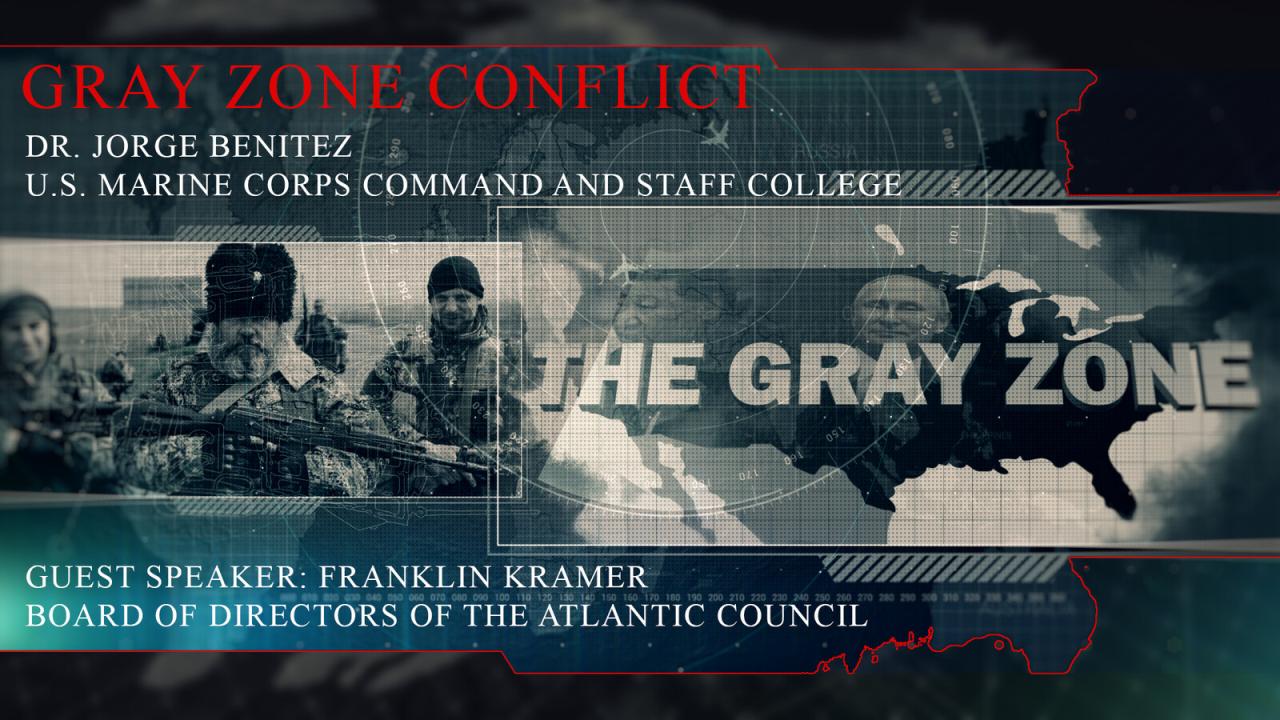Defining the Gray Zone: Helping Hand Task In Gray Zone Warfare
The gray zone, a murky and increasingly relevant battleground, refers to the space between traditional war and peace. It’s a realm where conflicts unfold without clear-cut rules or declarations of war, often utilizing unconventional tactics and actors.
Characteristics of Gray Zone Warfare
The gray zone is characterized by a blurring of lines between state and non-state actors, and the use of ambiguous tactics that fall short of traditional warfare. Here are some key characteristics:
- Hybrid Warfare: This involves a combination of conventional and unconventional methods, including cyberattacks, economic sanctions, propaganda, and political manipulation.
- Sub-threshold Conflict: Gray zone conflicts often operate below the threshold of conventional war, avoiding direct military confrontation.
- Deniability: Actors involved in gray zone warfare often attempt to obscure their involvement or deny responsibility for their actions.
- Asymmetrical Warfare: Gray zone conflicts typically involve actors with vastly different capabilities and resources, often pitting powerful states against weaker adversaries.
- Long-Term Strategies: Gray zone warfare is often characterized by a protracted approach, seeking to achieve objectives over time through attrition, coercion, and influence operations.
Differences between Conventional Warfare and Gray Zone Warfare
Gray zone warfare differs significantly from conventional warfare in several key aspects:
| Characteristic | Conventional Warfare | Gray Zone Warfare |
|---|---|---|
| Actors | States | States, non-state actors, and hybrid combinations |
| Tactics | Direct military force | Cyberattacks, economic sanctions, propaganda, political manipulation, and hybrid combinations |
| Rules of Engagement | Clear and established | Ambiguous and often contested |
| Objectives | Clear-cut territorial gains or regime change | Subtler objectives, such as influencing public opinion, destabilizing governments, or achieving strategic advantage |
| Duration | Short-term, decisive battles | Long-term, protracted campaigns |
Examples of Gray Zone Conflicts
The gray zone has witnessed a range of conflicts throughout history, including:
- The Cold War: The Cold War saw the United States and the Soviet Union engage in a series of proxy wars, ideological battles, and covert operations, all while avoiding direct military confrontation.
- The Russian Intervention in Ukraine: Russia’s annexation of Crimea and support for separatists in eastern Ukraine are examples of hybrid warfare, combining military force with political and economic pressure.
- Cyberattacks: The increasing use of cyberattacks by state and non-state actors to disrupt critical infrastructure, steal information, and influence elections has become a defining feature of gray zone warfare.
- Information Warfare: The manipulation of information through social media, propaganda, and disinformation campaigns is another tactic employed in gray zone conflicts.
The Nature of “Helping Hand” Tasks
“Helping hand” tasks are a key component of gray zone warfare, often used to achieve strategic objectives without resorting to direct military confrontation. These tasks are characterized by their subtle nature, often involving covert actions or the manipulation of information to influence events in a target state.
Types of “Helping Hand” Tasks
“Helping hand” tasks can be broadly categorized into several types, each with its own objectives and methods of implementation. Here’s a breakdown of some common types:
| Task Type | Description | Examples |
|---|---|---|
| Economic Assistance | Providing financial or technical support to a target state, often with the goal of influencing its economic policies or fostering dependence. |
– Offering loans or grants with strings attached, such as requirements for specific economic reforms. – Providing technical expertise in key industries, potentially leading to the transfer of sensitive technologies. |
| Political Support | Providing political backing to friendly factions or individuals within a target state, aiming to strengthen their influence and advance specific agendas. |
– Funding political campaigns or providing logistical support to opposition groups. – Using diplomatic channels to pressure or influence the target state’s government. |
| Information Warfare | Disseminating propaganda, misinformation, or disinformation to manipulate public opinion, sow discord, or undermine trust in the target state’s institutions. |
– Spreading false narratives through social media or state-controlled media outlets. – Hacking into government websites to leak classified information or plant fake news. |
| Cyberattacks | Launching cyberattacks against critical infrastructure or government networks, aiming to disrupt operations, steal data, or sow chaos. |
– Disrupting power grids or communication networks. – Stealing sensitive information from government databases. |
| Military Assistance | Providing non-lethal military support, such as training, equipment, or intelligence, to a target state’s military or paramilitary forces. |
– Providing training to foreign military units in counter-insurgency tactics. – Supplying weapons or equipment to friendly militias. |
Objectives and Outcomes
The objectives and outcomes of “helping hand” tasks vary depending on the specific context and the goals of the actors involved. However, some common objectives include:
– Weakening the target state’s economy or political system.
– Promoting instability and unrest within the target state.
– Influencing the target state’s foreign policy or decision-making.
– Gaining leverage over the target state for future negotiations or strategic advantage.
The success of “helping hand” tasks is often measured by the extent to which they achieve these objectives, such as:
– Increased economic dependence on the actor providing assistance.
– The rise of friendly factions or individuals to positions of power.
– A decline in public trust in the target state’s institutions.
– The target state’s adoption of policies favorable to the actor providing assistance.
Actors and Motivations

Gray zone warfare involves a diverse range of actors, each with their own motivations and strategies. Understanding these actors and their objectives is crucial for comprehending the complexities of gray zone operations and the potential impact of “helping hand” tasks.
State Actors
State actors, including governments and their intelligence agencies, are key players in gray zone warfare. They often employ a combination of covert and overt actions to achieve their strategic goals, ranging from influencing public opinion to undermining rival states. Their motivations can be diverse and multifaceted:
- Maintaining or Expanding Influence: States may engage in gray zone activities to project power and influence in regions of strategic importance, often without resorting to direct military confrontation. Examples include using hybrid warfare tactics to destabilize neighboring countries or supporting non-state actors to advance their interests.
- Undermining Rival States: Gray zone warfare can be used to weaken or destabilize rival states by exploiting their vulnerabilities and challenging their legitimacy. This can involve supporting opposition groups, spreading disinformation, or conducting cyberattacks.
- Protecting National Security: States may employ gray zone tactics to protect their national security interests, such as countering terrorism or deterring aggression. This can include conducting covert operations, supporting proxy forces, or deploying cyber defenses.
- Promoting Economic Interests: States may engage in gray zone activities to advance their economic interests, such as securing access to resources, protecting trade routes, or influencing global markets. This can involve using economic pressure, supporting friendly governments, or engaging in trade disputes.
Non-State Actors
Non-state actors, including terrorist organizations, criminal gangs, and private military companies, are increasingly involved in gray zone warfare. They often exploit the ambiguities of the gray zone to operate with relative impunity, pursuing their own objectives, which can range from political activism to financial gain. Their motivations can include:
- Political Change: Terrorist organizations and other extremist groups may engage in gray zone activities to achieve political goals, such as overthrowing governments or establishing independent states. They may employ tactics such as terrorism, propaganda, and social media campaigns.
- Financial Gain: Criminal gangs and other organized crime groups may exploit the gray zone to engage in activities such as drug trafficking, human trafficking, and cybercrime. They often operate in countries with weak governance or porous borders.
- Ideological Advancement: Some non-state actors may be motivated by ideological goals, such as promoting religious extremism, spreading disinformation, or influencing public opinion. They may use social media, propaganda, and other forms of information warfare to advance their agendas.
- Self-Preservation: Non-state actors may engage in gray zone activities to protect themselves from state repression or to gain leverage in negotiations. This can involve using violence, intimidation, or other forms of coercion.
“Helping Hand” Tasks and Actor Influence
“Helping hand” tasks can be used to influence or manipulate both state and non-state actors in a variety of ways. They can be employed to:
- Build Relationships: “Helping hand” tasks can be used to establish relationships with actors, providing a foundation for future cooperation or influence. This can involve providing assistance with humanitarian aid, disaster relief, or capacity building.
- Gain Leverage: By providing assistance, actors can gain leverage over others, making them more receptive to their influence or demands. This can involve offering financial support, technical expertise, or political backing.
- Shape Perceptions: “Helping hand” tasks can be used to shape public perceptions of actors, presenting them in a positive light or promoting their interests. This can involve conducting public relations campaigns, sponsoring events, or providing media coverage.
- Undermine Rival Actors: “Helping hand” tasks can be used to undermine rival actors by providing support to their opponents or exposing their weaknesses. This can involve providing funding, training, or logistical support to opposition groups.
Ethical Considerations

The use of “helping hand” tasks in gray zone warfare raises significant ethical concerns, as it involves exploiting vulnerabilities and manipulating actors to achieve strategic objectives. While seemingly benign, these tasks can blur the lines between legitimate assistance and covert influence, potentially violating international norms and human rights.
Potential Human Rights Concerns
The potential for human rights violations is a central ethical concern associated with “helping hand” tasks. These tasks can be used to manipulate vulnerable populations, exploit their needs, and undermine their autonomy. For instance, providing humanitarian aid with strings attached can create dependency and leverage for political influence.
- Exploitation of Vulnerability: “Helping hand” tasks can exploit the vulnerabilities of individuals or groups, such as poverty, lack of access to resources, or political instability. This exploitation can undermine their autonomy and dignity, leading to potential human rights violations.
- Coercion and Manipulation: The use of “helping hand” tasks can create situations where individuals or groups feel pressured to comply with the demands of the actor providing assistance. This coercion can undermine their ability to make free and informed choices, potentially violating their right to self-determination.
- Erosion of Trust: The use of “helping hand” tasks can erode trust between individuals and organizations, creating a climate of suspicion and distrust. This can hinder the effectiveness of legitimate humanitarian efforts and undermine the principles of transparency and accountability.
Violations of International Norms
“Helping hand” tasks can be used to violate international norms and undermine the principles of sovereignty and non-interference. By using seemingly benign actions to achieve strategic objectives, these tasks can undermine the international order and create instability.
“The use of ‘helping hand’ tasks can be seen as a form of covert influence, blurring the lines between legitimate assistance and strategic manipulation.”
- Undermining Sovereignty: “Helping hand” tasks can be used to influence domestic politics and undermine the sovereignty of states. By providing assistance with strings attached, actors can exert influence over internal affairs, violating the principle of non-interference.
- Erosion of International Law: The use of “helping hand” tasks can erode the effectiveness of international law by creating a system of gray areas where actions are difficult to classify as legitimate or illegitimate. This can create a precedent for the use of covert tactics and undermine the rule of law.
- Unintended Consequences: “Helping hand” tasks can have unintended consequences, exacerbating existing conflicts or creating new ones. The use of these tactics can create resentment and mistrust, leading to instability and violence.
Countermeasures and Defense
Countering “helping hand” tasks in gray zone warfare presents unique challenges due to the ambiguous nature of these operations and the difficulty in attributing responsibility. The lack of clear-cut rules of engagement and the often-hidden hand of state actors make it difficult to identify and respond to these tactics effectively.
Challenges in Countering “Helping Hand” Tasks
The challenges in countering “helping hand” tasks stem from the very nature of gray zone warfare, where lines are blurred, and actions are often veiled. Here are some key challenges:
- Attribution: Determining the true source of “helping hand” tasks is often difficult. State actors may use proxies, non-state actors, or even seemingly independent individuals to carry out these operations, making it hard to pin down the responsible party.
- Ambiguity: The actions involved in “helping hand” tasks can be ambiguous, making it difficult to distinguish between legitimate assistance and covert influence. This ambiguity can make it hard to justify a response, especially if it involves military action.
- International Law: The lack of clear international legal frameworks for addressing gray zone warfare makes it difficult to define what constitutes a violation and what actions are permissible in response.
- Public Opinion: Public opinion can be easily swayed by narratives presented by actors engaged in “helping hand” tasks, especially if they appear to be offering assistance to vulnerable populations. This can make it challenging for governments to take decisive action against these tactics.
Strategies for Countering “Helping Hand” Tasks, Helping hand task in gray zone warfare
Developing effective countermeasures requires a multi-faceted approach that addresses the challenges Artikeld above. Here are some key strategies:
- Attribution: Invest in intelligence gathering and analysis capabilities to identify and track the actors behind “helping hand” tasks. This includes developing sophisticated methods for attributing actions to specific actors, even when they operate through proxies or non-state actors.
- Information Warfare: Counter the narratives and propaganda disseminated by actors engaged in “helping hand” tasks by providing accurate information and exposing their true motives. This can involve working with media outlets, social media platforms, and civil society organizations to disseminate counter-narratives.
- Capacity Building: Strengthen the capacity of vulnerable states and populations to resist “helping hand” tasks by providing them with the resources and training they need to identify and counter these tactics. This can include training on information literacy, critical thinking, and resilience building.
- Diplomatic and Legal Responses: Engage in diplomatic efforts to expose and deter “helping hand” tasks, and work with international partners to develop legal frameworks that address these tactics. This could involve crafting new international norms and conventions that explicitly condemn and prohibit the use of “helping hand” tasks in gray zone warfare.
- Resilience Building: Promote resilience within vulnerable populations by strengthening their social, economic, and political institutions. This can help them withstand the pressures and influence exerted by “helping hand” tasks.
Examples of Successful Countermeasures
While “helping hand” tasks are a relatively new phenomenon, there are some examples of successful countermeasures employed by different actors.
- The Baltic States: These countries have been actively countering Russian “helping hand” tasks by promoting media literacy and countering disinformation campaigns. They have also worked with international partners to strengthen their defense capabilities and deter Russian aggression.
- Ukraine: Ukraine has been successful in countering Russian influence operations by exposing their false narratives and mobilizing public opinion against them. This has involved using social media to spread accurate information and debunk Russian propaganda.
- The United States: The US has been working to counter Chinese influence operations in the Pacific region by strengthening alliances, promoting democratic values, and investing in infrastructure development. They have also been active in exposing Chinese attempts to undermine US interests through economic coercion and other forms of influence.
Future Implications
The gray zone is a dynamic and evolving battlefield, and the use of “helping hand” tasks is likely to become even more sophisticated and prevalent in the future. As technology continues to advance, the opportunities for covert and subtle forms of influence will only increase, posing new challenges for policymakers and security professionals.
The Impact of Technological Advancements
Technological advancements will significantly impact the nature of “helping hand” tasks in gray zone warfare. The increasing availability of advanced technologies, such as artificial intelligence (AI), cyber capabilities, and social media platforms, will enable actors to conduct more sophisticated and targeted operations.
- AI-powered disinformation campaigns: AI can be used to generate and disseminate large volumes of fake news and propaganda, targeting specific demographics and influencing public opinion. This can undermine trust in institutions and sow discord within societies.
- Cyberattacks: The use of cyberattacks to disrupt critical infrastructure, steal sensitive data, or manipulate elections will likely become more common. These attacks can be conducted remotely and with a high degree of deniability, making attribution difficult.
- Social media manipulation: Social media platforms can be used to spread misinformation, amplify certain narratives, and influence public discourse. Actors can create fake accounts, manipulate algorithms, and leverage social media trends to achieve their objectives.
A Future Scenario
Imagine a future conflict where a nation-state, through a network of proxies and covert actors, utilizes “helping hand” tasks to destabilize a rival country. The scenario could unfold as follows:
The nation-state leverages AI-powered disinformation campaigns to sow discord and undermine trust in the rival government. These campaigns target specific demographics, exploiting existing social and political divisions. Simultaneously, cyberattacks are launched against critical infrastructure, causing disruptions and economic damage.
The nation-state then uses social media manipulation to amplify its narratives and influence public opinion, creating a favorable environment for its proxies to operate. These proxies could be local actors, non-governmental organizations, or even criminal groups, all working towards the nation-state’s objectives. The use of “helping hand” tasks allows the nation-state to achieve its goals without directly engaging in open warfare, minimizing the risk of retaliation and maintaining plausible deniability.
Helping hand task in gray zone warfare – The rise of “helping hand” tasks in gray zone warfare is a stark reminder that the nature of conflict is evolving. As technology advances and the world becomes increasingly interconnected, these subtle tactics will only become more sophisticated and potent. Understanding the dynamics of this new battlefield is crucial for navigating the complexities of the 21st century. Whether we are policymakers, business leaders, or concerned citizens, we must be aware of the hidden agendas and the potential for manipulation that lurk beneath the surface of seemingly benign actions. The future of international security hinges on our ability to identify and counter these “helping hands” before they wreak havoc on our world.



